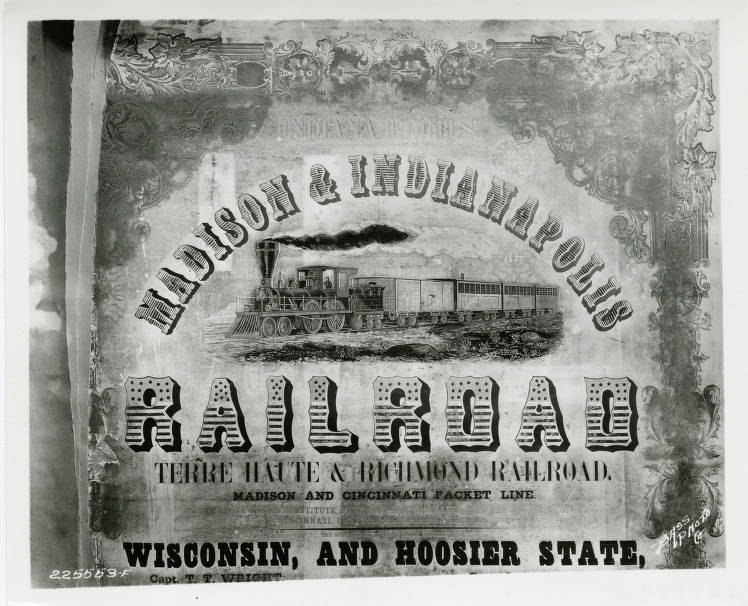The Madison and Indianapolis Railroad (M&I) was the first operable steam railroad completed in Indiana and one of the first west of the Allegheny Mountains. Construction began under the auspices of the state as part of the comprehensive Internal Improvements Act of 1836. The project encountered serious financial problems, particularly in constructing the line over the ridges rising above Madison. In 1842, the state turned the Madison and Indianapolis Railroad project over to a private company, the terms of the agreement later becoming controversial.

Under the presidencies of Nathan Palmer (1842-1844) and (1844-1848), work on the 86.5-mile line continued, and the first through train arrived at Indianapolis on October 1, 1847. By hauling surplus farm commodities southeastward to Madison and merchandise in the direction of Indianapolis, the M&I Railroad was remarkably successful for about six years.
This initial success encouraged the speedy construction of other pioneer in the state, and the completion of some of these, particularly the Jeffersonville and the Indianapolis & Cincinnati, brought crippling competition to the M&I. Under the presidency of (1848-1854), the M&I Railroad reached its peak as a freight carrier. The competition from other lines, financial overextension, and continuing problems on Madison Hill paved the way for its takeover by the rival Jeffersonville Railroad (1866), and its later merger into the system (1872).
Only the segment of the original M&I running from North Vernon to Columbus has been totally abandoned. The Louisville and Indiana Railroad (LIRC) uses the Indianapolis to Columbus portion, and the City of Madison Port Authority has access to the 25.8 miles of track from Madison to North Vernon.

Help improve this entry
Contribute information, offer corrections, suggest images.
You can also recommend new entries related to this topic.